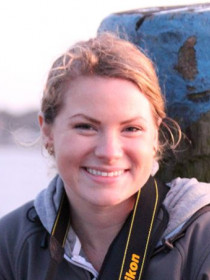
Mackenzie Dale Mazur
About Mackenzie
Mazur's research focuses on fisheries science and management. Mazur's overarching themes in writings include fisheries, fisheries modelling, fisheries management, conservation, and fish population dynamics. Mazur more specifically, uses computer simulations to evaluate management regulations in New England fisheries. Mazur's other areas of expertise also include fisheries stock assessment, habitat modelling, and oral history interviews. Mazur is the president of the American Fisheries Society Socioeconomics Section, and serves on the Ocean Best Practices Ethics Working Group and the Gulf of Maine Research Institute Science Seminar Committee.
Contributions
How Fisheries Can Test Management Rule Changes Before Enacting Them
In the News
Publications
Discussing V-notching, a conservation measure intended for the protection of mature female lobsters, which has been hypothesized to have contributed to the dramatic increase in American lobster Homarus americanus landings and stock biomass in the Gulf of Maine. Evaluates the impact of this conservation measure, along with scenarios examining different v-notching compliance rates and v-notch definitions which were simulated using an individual-based lobster simulator with different recruitment dynamics scenarios.
Aims to modify and parameterize an individual-based lobster simulator (IBLS) to simulate the American lobster fishery in the Gulf of Maine. Describes that in order to simulate the fishery, the IBLS was tuned to match the seasonal catch and size composition from the 2015 American lobster stock assessment by adjusting the values of coefficients for select parameters.
Examines conservation compliance in the American lobster fishery in Maine. Explains in this fishery, there is an important conservation measure that protects spawning female lobsters, known as v-notching, which is considered a norm.